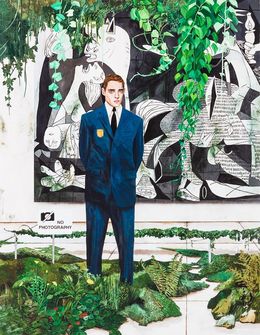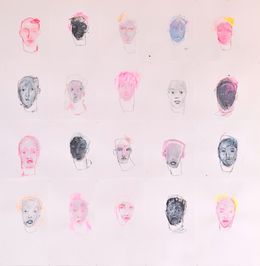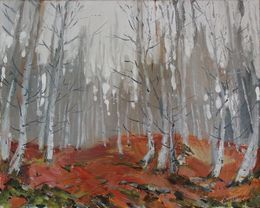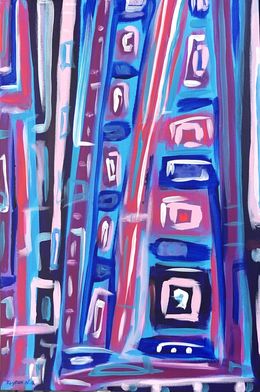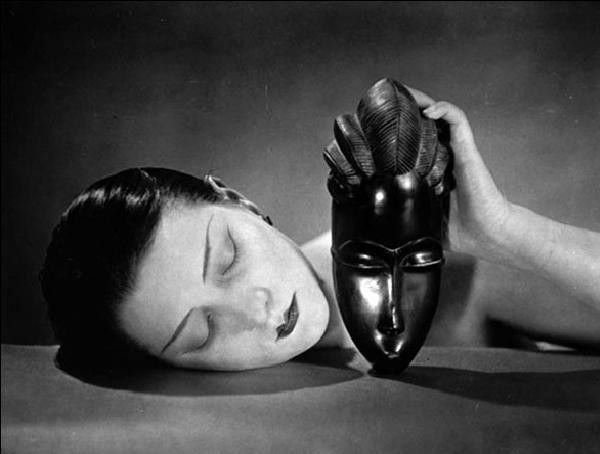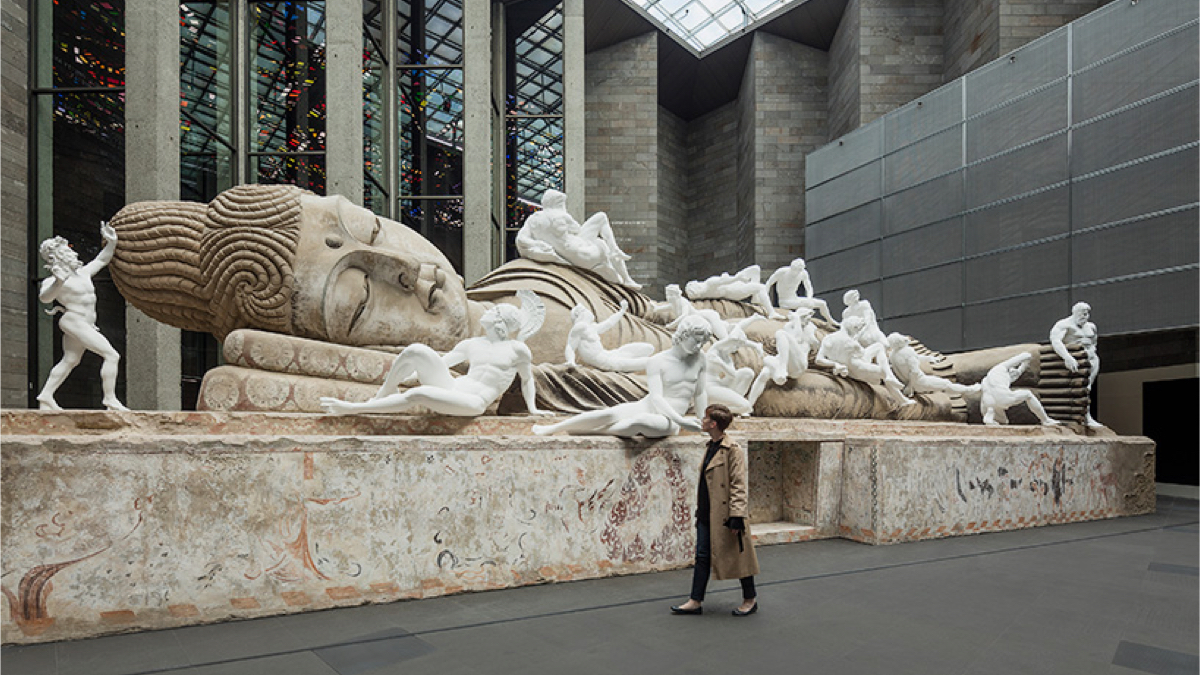
Collector's Guide: Vocabulary
Art topic at a diner or- a day at the museum and you feel lost? All the artistic vocabulary can be difficult to manage but is essential for a (futur)collector or even just an art lover. Artsper has selected elements of vocabulary that you need to know.
{GENERAL TERMS}
Caption: With the name of the artist, the title, the year of creation, tehcnique, dimensions and name of owner (private, museum or gallery), you could say the caption is like the artpieces ID.
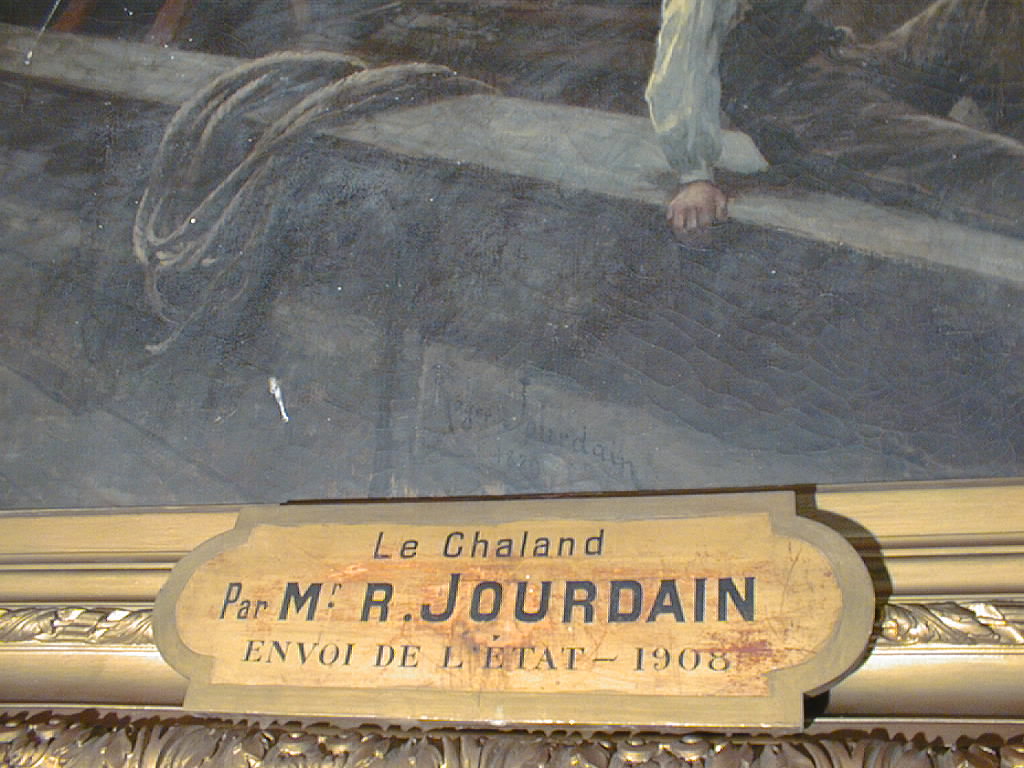
Format: the format of an artwork refers to the shape (rectangular, square, oval, …) the dimensiosn and the proportions and the orientation (vertical, horizontal…) of the media.
Manifesto: a theory that is written or sometimes an artwork itself considered to be the origin of an artistic movement.
Artistic movement: An art movement is a tendency or style in art with a particular common philosophy, followed by a group of artists during a limited period of time, (cubism, impressionism, Dadaism, minimalism…)
Media: What the artwork is executed on. It can be paper, canvas,…
Technique: the process used by the artist to create and achieve his work (painting, photography, sculpture…)
Mixed media: Mixed media refers to an artwork in the making of which more than one medium has been used.
{PAINTING AND ITS GENRES}
Genre: Genre is the definition of categories of subjects in painting like portraits, landscapes, still life… In the 17th century, the Academy classified them in two groups. “genres majeurs” were history painting, religious painting and allegory. “Genres mineurs”, a bit neglected were : portrait, still life, landscape and genre painting. This classification led to artists only specializing in one genre. During the 20th century, artists ended this grouping.
Allegory: Refers to the personification of an abstract concept like love or freedom embodied in an animal or individual.

Dawn’s awakening, Pairoj Karndee
Still life: a still life is a genre that illustrates inanimate objects, often everyday life items like tableware or a basket of fruit.
Vanity: A vanity is a still life that represents objects like a skull or a candle, reminding the spectator that he is mortal and life is brief. It is called Memento Mori “remember you are mortal”.
Vanité papillons, Philippe Pasqua
{REPRESENTATION}
Abstract: Abstract started in the beginning of the 20th century, it is an artistic movement that does not try to imitate visible reality.
Figurative: Refers to arts that represent an identified subject like the recognizable painting of an object of a landscape.
Anthropomorphic: a form that reminds a human attributes.
Aesthetic canon: a canon in the sphere of visual arts and aesthetics is a rule for proportions to produce a harmoniously formed figure.
Contour: the line that outlines the shape of the subject or form.
Shade off: the process of blending, softening and attenuating the outline of a drawing.
Realism: tends to imitate teality
Pentimento: an alteration in a painting, indicated by traces of previous work, showing that the artist has changed his mind as to the composition throughout the process of painting.
Subject: What is represented in an artwork.
{THE ARTWORK AND ITS NATURE}
Classic: What belongs to Ancient Greece or an artwork of an artist inspired of this period.
Collage: a technique mainly used in the visual arts, where the artwork is made from an assemblage of different fragments of forms, creating a new whole. This process was invented by cubists in 1910.
Conceptual: Refers to an idea, an approach or the reflection of the mind.
Sketch: A rapidly executed drawing that is not usually intended as a finished work. It is the starting point of the creation of an artwork.
Print: A print allows the mechanical production of a drawing in a certain number of copies.
Gyotaku 2-0-13, Bernard Gaume
Fresco: mural painting.
Happening: artistic experience where the event is the artwork. This form of art is temporary and often recorded with video or photography.
Installation: a form of artistic expression that is recent where an assemblage of objects create a whole.
Performance: a form of artistic expression where action in time constitutes the art work. Like a happening, this temporary art is often filmed or photographed.
Photomontage: multiple photographs are assembled in a composite photograph.
Series: Group of art pieces with the same characteristics or a common subject.

About Artsper
Founded in 2013, Artsper is an online marketplace for contemporary art. Partnering with 1,800 professional art galleries around the world, it makes discovering and acquiring art accessible to all.
Learn more



